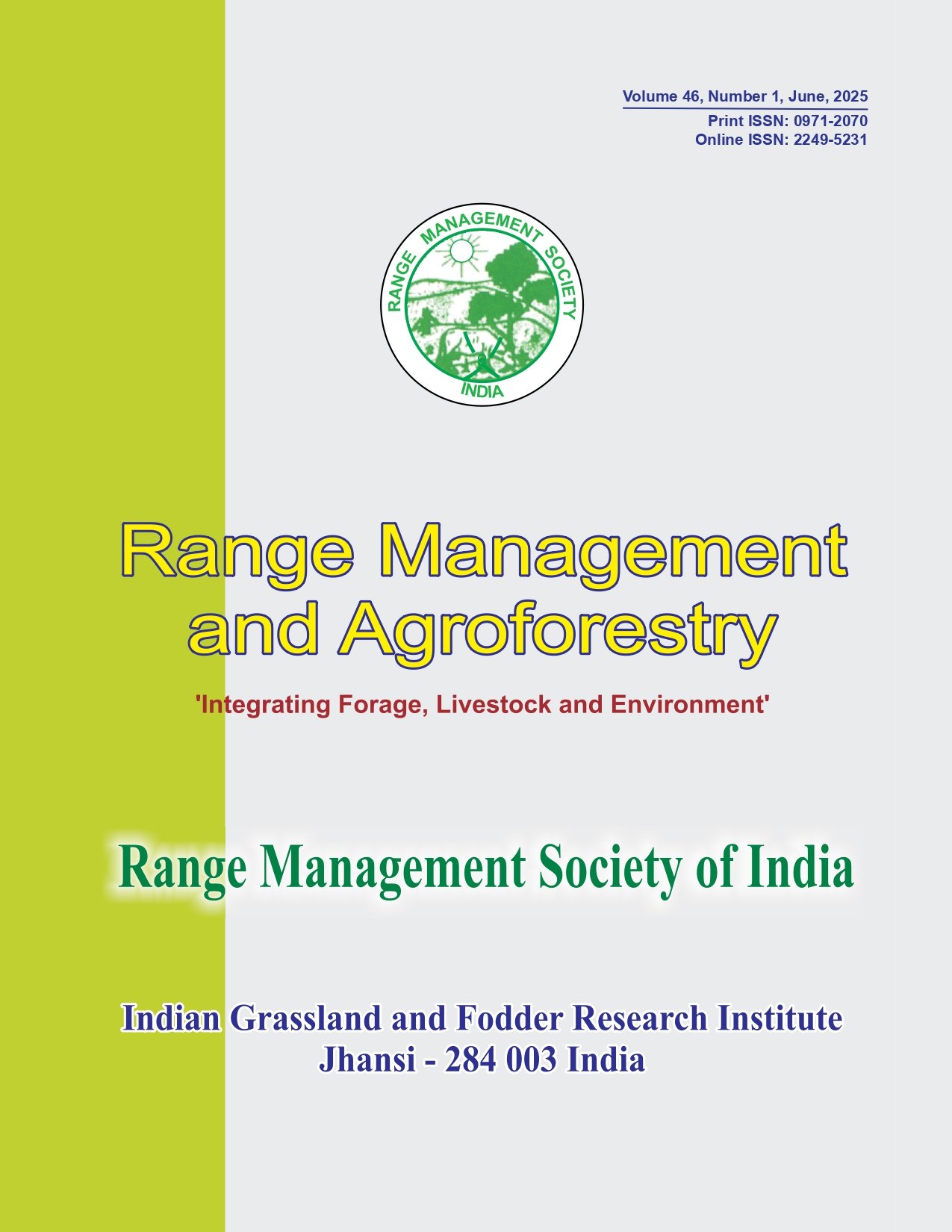Assessment of carrying capacity of different silvipastoral system for sustainable sheep production in Western zone of Tamil Nadu, India
DOI:
https://doi.org/10.59515/rma.2025.v46.i1.03Keywords:
Carrying capacity, Silvipasture system, Small ruminant productionAbstract
A study was conducted to assess the carrying capacity of silvipastoral-based agroforestry systems in dryland regions of Tiruppur district, Tamil Nadu, over a two-year period through on-farm field experiments. The treatments consisted of five silvipastoral systems viz., Acacia leucophloea + Cenchrus ciliaris (T1), A. leucophloea + C. ciliaris + Stylosanthes hamata (T2), A. leucophloea + C. setigerus + S. hamata (T3), A. leucophloea + Sorghum bicolor + Phaseolus trilobus (T4) and A. leucophloea + C. setigerus + S. hamata and S. bicolor + P. trilobus (T5). Six Mecheri sheep (five ewes and one ram) were maintained in each location of silvipastoral system. The results obtained from two years and three locations indicated higher Cenchrus equivalent yield, utilization rate and carrying capacity of 11010 kg ha-1, 80.5% and 39 sheep ha-1, respectively in T5, followed by 9713 kg ha-1, 79.8% and 34 sheep ha-1, respectively in T4. Thus, the A. leucophloea + C. setigerus + S. hamata and S. bicolor + P. trilobus (T5) silvipastoral system was found to be ideal for higher forage yield and carrying capacity of pasture in the western region of the Tamil Nadu.
Downloads
Downloads
Published
How to Cite
Issue
Section
License
Copyright (c) 2025 V. S. Mynavathi, V. M. Sankaran, C. Valli, C. Jayanthi, D. Ravisankar

This work is licensed under a Creative Commons Attribution-ShareAlike 4.0 International License.







